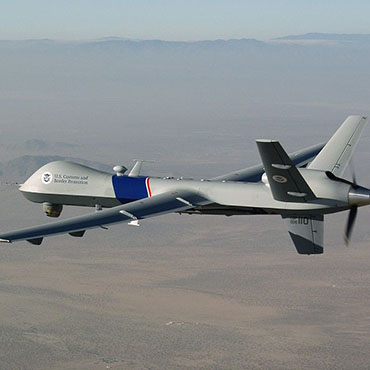IG says Border Patrol drones not effective

CBP leadership contends that the inspector general’s criticism is too simplistic a way to look at the efficacy of border technology.

MQ-9 Reaper of the U.S. Customs and Border Protection. (Source: Wikimedia)
A new report says Customs and Border Protection's Predator drone systems aren't measuring up to expectations, but border security officials contend that some of those expectations don't necessarily comport with the technology's capabilities.
In a 37-page report released Jan. 6, the Department of Homeland Security Inspector General's office asserts that the CBP's Unmanned Aircraft System program, after eight years in operation, has significant problems, including a lack of performance measures and sky-high operational costs. The IG also said the program has contributed meagerly to apprehension of illegal border crossers.
"Specifically, the unmanned aircraft are not meeting flight hour goals, and we found little or no evidence CBP has met its program expectations," said the IG. "We estimate it costs $12,255 per flight hour to operate the program; CBP's calculation of $2,468 per flight hour does not include all operating costs."
The OIG said CBP doesn't include pilot/operator salaries and other flight-related expenses, as well as some substantial data analysis operations.
The $443 million CBP plans to spend on program expansion could be put to better use by using alternative technologies, said the IG.
Ultimately, the IG report recommended CBP get a better handle on costs, border coverage areas and program transparency.
More than numbers
Along with cost and operational analyses, the report said the number of apprehensions directly attributable to the program were "relatively few."
That direct correlation between the number of apprehensions directly attributable to technology is a pressure point for border security agencies, as technological capabilities expand. The day the IG published the study, two Border Patrol chiefs remarked in an unrelated border security panel discussion in Washington that measurements based on the simple number of apprehensions are unrealistic for many types of newer border security technologies.
Assessing and measuring border security "is beyond just counting apprehensions," said Robert Schroeder, Border Patrol assistant chief. Schroeder and Border Patrol Chief Michael Fisher said simply measuring the number of apprehensions by agents and technology isn't a very effective means of measuring overall performance.
Historically, border security agencies gauged effectiveness by the number of illegal aliens apprehended, the amount of drugs seized, and resources deployed in a specific area. However, a new strategic plan inaugurated by the Border Patrol in the last two years doesn't rely solely on those numbers.
Learning how to meld data gathered from drones, ground sensors and radar, said Schroeder, is "more of an art than a science." Gauging effectiveness based on a simple results-oriented parameter like apprehension, he said, skates past larger strategic capabilities of some technologies, including drones.
"UAS is not another helicopter," said Fisher. "We now have to integrate UAS with helicopters with FLIR [thermal imaging] and other various capabilities" to produce a technological fusion that can yield a wealth of valuable data beyond straight apprehension numbers, he said. "That wasn't the case 10 years ago."


